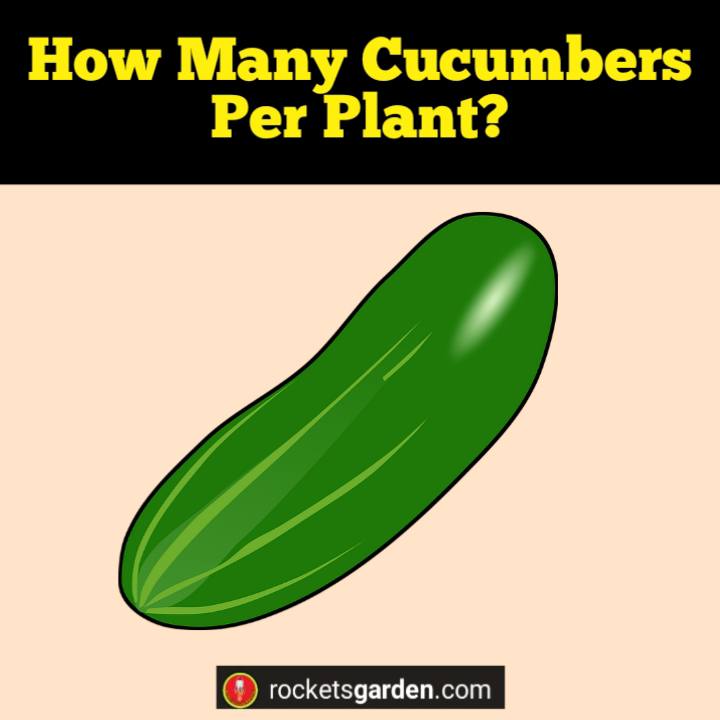
If you’re planning to grow cucumbers in your garden or in containers, knowing the optimal conditions and care for your plants can help you achieve a good yield of fresh and delicious cucumbers.
How Many Cucumbers Per Plant?
The number of cucumbers per plant can vary depending on various factors. Generally, a healthy cucumber plant can produce between 10 to 20 cucumbers per season.
However, the actual number of cucumbers per plant can be affected by factors such as the plant’s age, variety, growing conditions, and maintenance.
How Many Cucumbers Per Plant Is Considered A Good Yield?
A good yield of cucumbers per plant is typically around 10 to 15 cucumbers per season. However, this can vary depending on the variety of cucumber, growing conditions, and other factors.
Some varieties of cucumbers are known to produce more fruit than others, and proper care and maintenance can also improve the plant’s yield.
Can You Get Multiple Harvests From One Cucumber Plant?
Yes, you can get multiple harvests from one cucumber plant. In fact, regular harvesting can encourage the plant to produce more cucumbers.
Once the plant has produced several cucumbers, it is recommended to harvest them regularly, which can help encourage the plant to continue producing new fruit.
How Often Should I Pick Cucumbers From My Plant?
Cucumbers should be picked from the plant regularly to encourage more fruit production. Depending on the variety and growing conditions, cucumbers can be harvested every two to three days.
It is important to harvest cucumbers when they are still small and firm, as leaving them on the vine for too long can cause them to become bitter and less flavorful.
How Much Space Does Each Cucumber Plant Need To Produce A Good Yield?
Each cucumber plant typically requires about two to three square feet of space to produce a good yield. This allows the plant to spread out and receive enough sunlight and nutrients to support the growth of the fruit.
However, some varieties of cucumbers may require more or less space, so it is important to read the seed packet or consult a gardening guide for specific recommendations.
What Factors Can Affect The Number Of Cucumbers A Plant Produces?
Several factors can affect the number of cucumbers a plant produces, including the variety of cucumber, growing conditions, and maintenance.
The age of the plant, soil quality, amount of sunlight, and water and fertilizer levels can also play a role in the plant’s productivity.
Additionally, pests and diseases can damage the plant and reduce the number of cucumbers it produces.
What Are Some Tips For Maximizing Cucumber Yield Per Plant?
If you’re looking to maximize your cucumber yield per plant, there are several tips that can help. One of the most important factors is ensuring that the plant is grown in the right conditions.
Cucumbers thrive in warm weather and require full sun exposure (6-8 hours per day). It’s also important to ensure that the soil is well-drained and has sufficient organic matter to provide nutrients to the plant.
Another tip for maximizing cucumber yield is to ensure that the plant is properly supported. Cucumber vines can grow quite long and heavy, so providing a trellis or other support can help prevent the vines from breaking and improve the overall health of the plant.
It’s also important to prune the plant regularly to remove any dead or damaged leaves, as this can help redirect the plant’s energy to producing more cucumbers.
Proper watering is also key to maximizing cucumber yield per plant. Cucumbers require consistent moisture, but overwatering can lead to root rot and other issues. It’s recommended to water the plant deeply once or twice a week, depending on the weather conditions. Mulching can also help retain moisture in the soil and keep the plant’s roots cool.
Finally, fertilizing the plant can help maximize cucumber yield. It’s important to use a balanced fertilizer that provides a mix of nitrogen, phosphorus, and potassium.
It’s recommended to fertilize the plant every two to three weeks during the growing season, but be sure to follow the instructions on the fertilizer package to avoid over-fertilization, which can damage the plant.
